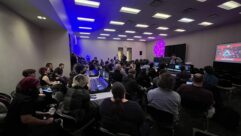The Deficit Reduction Act: A Boon for Distance Education?
Dec 5, 2006 12:41 PM,
By Linda Seid Frembes
Acts of Congress aren’t usually on the radar for AV publications—especially one such as the Deficit Reduction Act of 2005 (S 1932) (click here) from this past summer. The network news made hay about the changes to Medicare and Medicaid spending, but another little-known higher-education provision on the bill has potential for a big impact in the AV world.
Signed into law by President Bush Feb. 8, 2006, the Deficit Reduction Act of 2005 and all of its provisions took effect July 1, 2006. Within this act are provisions that amend the Higher Education Act and repeal the “50 Percent Rule” for colleges and universities. The 50 Percent Rule prohibits colleges and universities who enroll more than 50 percent of students at a distance or who provides more than 50 percent of education courses via distance-education programs from offering its students federal financial aid. The rule is eliminated for distance-education programs offered through telecommunications methods such as the Internet or satellite transmission (which are perhaps the two most popular means of distance education nowadays), but would still apply to traditional written-correspondence programs.
This is the federal government’s first major nod at the changing makeup of America’s higher education student body, especially the rising number of non-traditional students. As defined by the National Center for Education Statistics (NCES), a nontraditional student is one who has any of the following characteristics:
- Delays enrollment (does not enter postsecondary education in the same calendar year that he or she finished high school)
- Attends part time for at least part of the academic year
- Works full time (35 hours or more per week) while enrolled
- Is considered financially independent for purposes of determining eligibility for financial aid
- Has dependents other than a spouse (usually children, but sometimes others)
- Is a single parent (either not married or married but separated and has dependents)
- Does not have a high school diploma (completed high school with a GED or other high school completion certificate or did not finish high school).
Non-traditional students are challenging the traditional thinking of higher education and the needs of its students. Interestingly, the NCES found that 73 percent of all undergraduates in 1999–2000 had one or more of these non-traditional characteristics. “WGU did support the removal of the 50 Percent Rule because the issue should be the quality of the education, not the mode of delivery,” says Dr. Robert Mendenhall, president of Western Governors University, an online university. “Online education is now widely accepted as equal to or better in quality to classroom instruction.”
So what does this all mean for the AV industry? As the rule change gains awareness, higher-education facilities will likely invest in the infrastructure to offer more distance-education programs for use as a recruiting tool for both traditional and non-traditional students. “The abolishment of the rule is certainly good news for VBrick as it helps promote new technologies for video such as IPTV teleconferencing,” says Pat Cassella, VBrick Systems senior director of marketing, education. “Video communication in the classroom helps to improve learning by reducing geographical boundaries, strengthening the ability to stream and record lectures, in addition to providing more flexible learning environments. The removal of the rule is a big move in the right direction to fulfill the potential of distance learning.”
A recent study from Eduventures, the leading research and consulting firm for the education industry, show that there is a strong consumer demand for online higher education. In a comprehensive study called “Expanding Demand for Online Higher Education” released in November 2006, the firm found that approximately 50 percent of consumers anticipating enrolling in a postsecondary program say they would prefer a mode of delivery either dominated by online or at least balanced between online and on-campus instruction. However, only approximately 7 percent of students in postsecondary education in the United States are studying for a degree or certificate wholly online. “This level of interest is far higher than current consumer experience,” says Richard Garrett, senior analyst for Eduventures’ Learning Collaborative for Online Higher Education. “Consumer enthusiasm for online higher education suggests that this market will continue to grow strongly.”
The report also found that 63 percent of respondents who were willing to consider a wholly online program preferred the online provider to have some physical presence (branch campus or main campus) at least within their state. Only 37 percent of respondents willing to consider wholly online delivery disregarded location as a factor.










